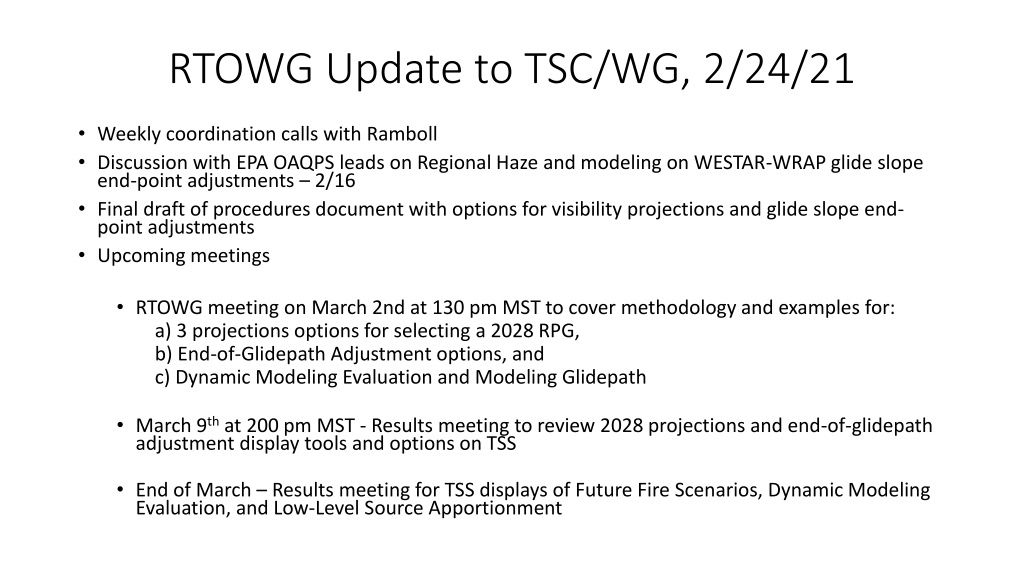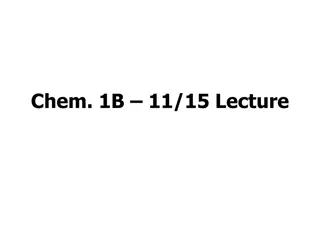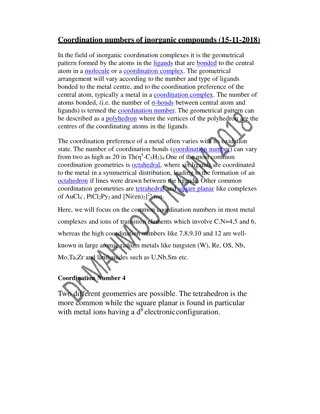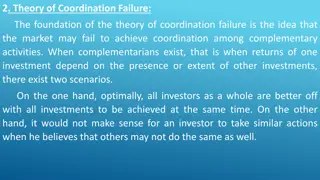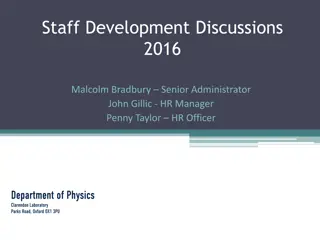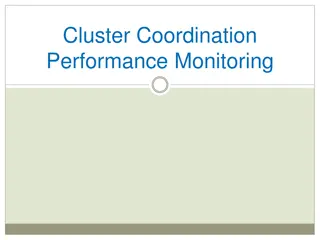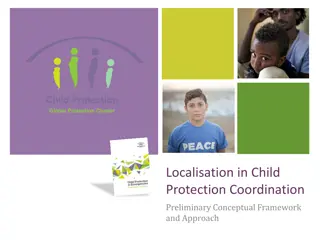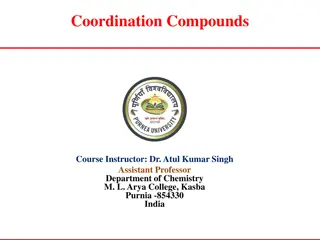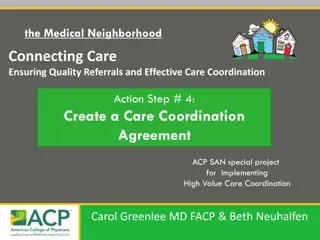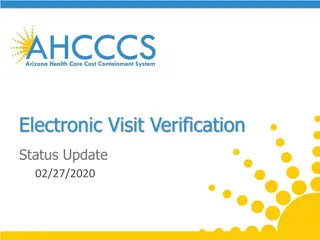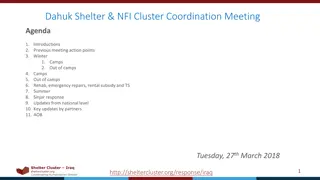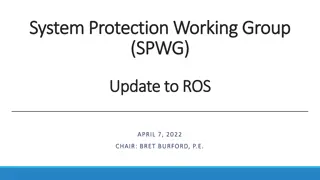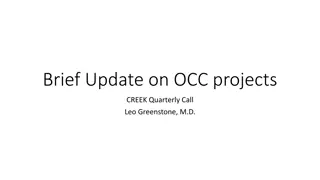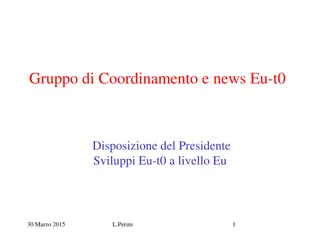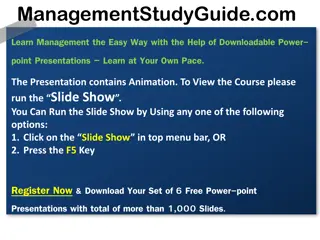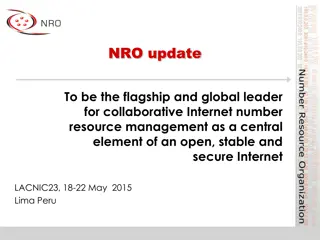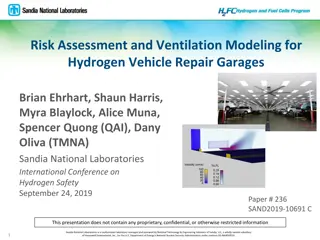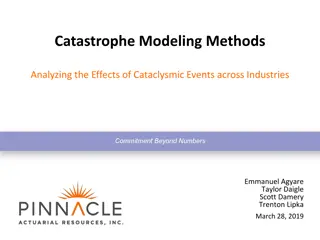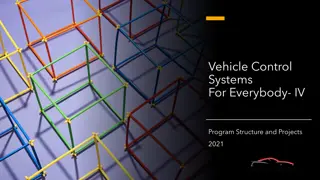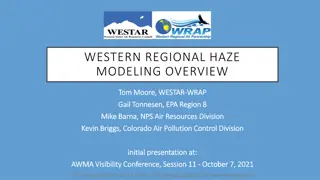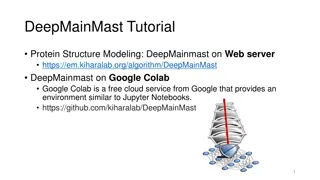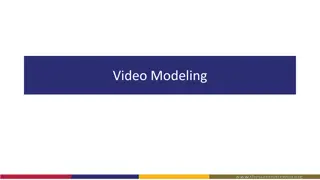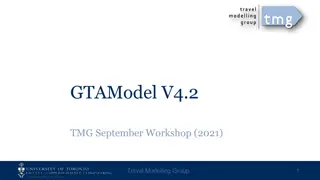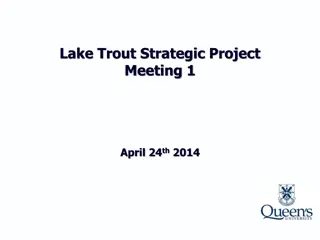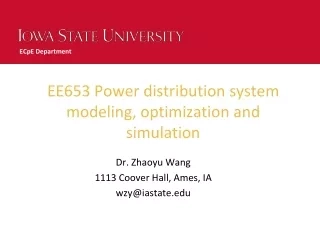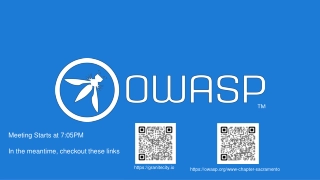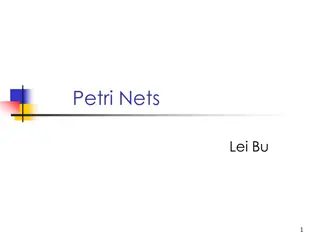Update on Modeling and Coordination Discussions
Weekly coordination calls with Ramboll and discussions with EPA OAQPS leads focused on Regional Haze and modeling adjustments. Final draft of procedures document with visibility projections and glide slope adjustments. Upcoming RTOWG meetings covering methodology, projections, and modeling evaluations. Overview of modeling status and schedule progress, including adjustments at Cabinet Mountain WA and Sawtooth WA. Analysis of NOx and SO2 emissions. Example of USAnthro extinction glide path calculation.
Download Presentation

Please find below an Image/Link to download the presentation.
The content on the website is provided AS IS for your information and personal use only. It may not be sold, licensed, or shared on other websites without obtaining consent from the author. Download presentation by click this link. If you encounter any issues during the download, it is possible that the publisher has removed the file from their server.
E N D
Presentation Transcript
RTOWG Update to TSC/WG, 2/24/21 Weekly coordination calls with Ramboll Discussion with EPA OAQPS leads on Regional Haze and modeling on WESTAR-WRAP glide slope end-point adjustments 2/16 Final draft of procedures document with options for visibility projections and glide slope end- point adjustments Upcoming meetings RTOWG meeting on March 2nd at 130 pm MST to cover methodology and examples for: a) 3 projections options for selecting a 2028 RPG, b) End-of-Glidepath Adjustment options, and c) Dynamic Modeling Evaluation and Modeling Glidepath March 9that 200 pm MST - Results meeting to review 2028 projections and end-of-glidepath adjustment display tools and options on TSS End of March Results meeting for TSS displays of Future Fire Scenarios, Dynamic Modeling Evaluation, and Low-Level Source Apportionment
Overview of Modeling Status and Schedule Left to complete with TSS delivery/display: 2002-RepBase2-2028OTBa2 Dynamic Evaluation and Modeling Glidepath of U.S. Anthropogenic reductions Future Fire Scenarios 1 (climate change-forced wildfire activity) and 2 (implementation of FLM scenario of wildland Rx fire activity) Left to complete both modeling and TSS delivery/display: Low-Level 2028OTBa2 Source Apportionment (state by source sector for WESTAR-WRAP region) Left to complete for TSS tools and results: cleanup efforts through April
WRAP Glidepath Adjustments At Cabinet Mountain WA and Sawtooth WA, adjustment for Wildland Prescribed fire adds to International contributions.
2002DE, RepBase, and 2028OTB NOx and SO2 emissions 2002DE NOx 47% higher than 2014v2 Point 57% On-Road 50% Total: 1,027,530 tpy Total: 1,791,227 tpy Total: 2,849,996 tpy 2002DE SO2 177% higher than 2014v2 Point 253% CMV 749% Total: 239,546 tpy Total: 957,878 tpy Total: 280,127 tpy
EXAMPLE USANTHRO EXTINCTION GLIDEPATH CALCULATION 2028 Glidepath Mount Rainier, WA Year 2002 RepBase2 2028OTBa2 2064 USAnthroCMV-US 32.40 16.52 8.06 0 SOAA 3.84 3.47 2.63 0 BC-US 0.28 0.29 0.29 0 Tot-US 47.60 21.53 11.80 0 Ag-US 0.00 0.00 0.00 0 11.08 1.25 0.82 0 Coastal State 36.85 27.64 Average Light Extinction by Sources: MORA1 Average Light Extinction by Sources: MORA1 Average Light Extinction by Sources: MORA1 100 100 100 90 90 90 80 80 80 Average Light Extinction by Sources: MORA1 70 70 70 Light Extinction (1/Mm) Light Extinction (1/Mm) 60 60 60 50 50 50 40 40 40 30 30 30 20 20 20 10 10 0 0 10 Total Total 0 US-Anthro CMV-US BC-US BC-Int US-Anthro CMV-US BC-US BC-Int Total MEX-Anthro CAN-Anthro CMV_nonUS Nat MEX-Anthro CAN-Anthro CMV_nonUS Nat US-Anthro-WRAP US-Anthro-nonWRAP CMV-US BC-US BC-Int BC-Nat WF-Fires Rx-Fires Ag-Fires BC-Nat WF-Fires Rx-Fires Ag-Fires MEX-Anthro CAN-Anthro CMV_nonUS Nat BC-Nat SOAA SOAB IC Top SOAA SOAB IC Top WF-Fires Rx-Fires Ag-Fires SOAA SOAB 5 NonUS-Fires NonUS-Fires IC Top NonUS-Fires
